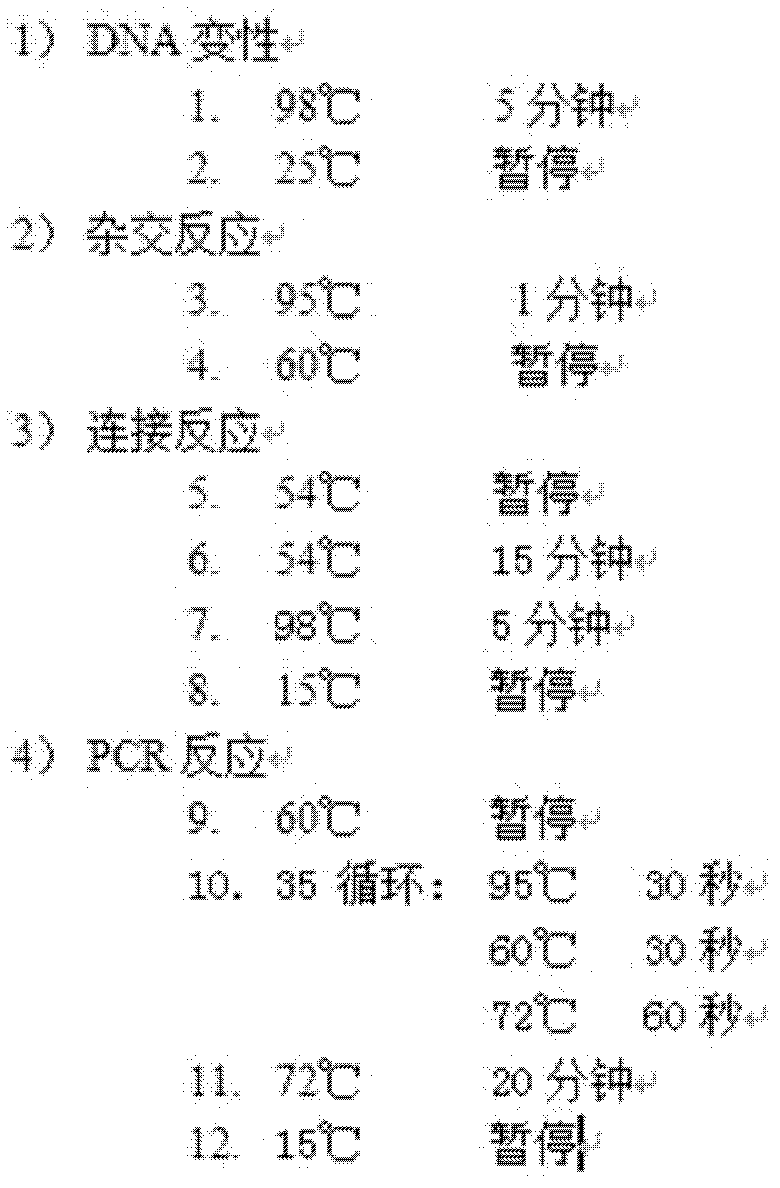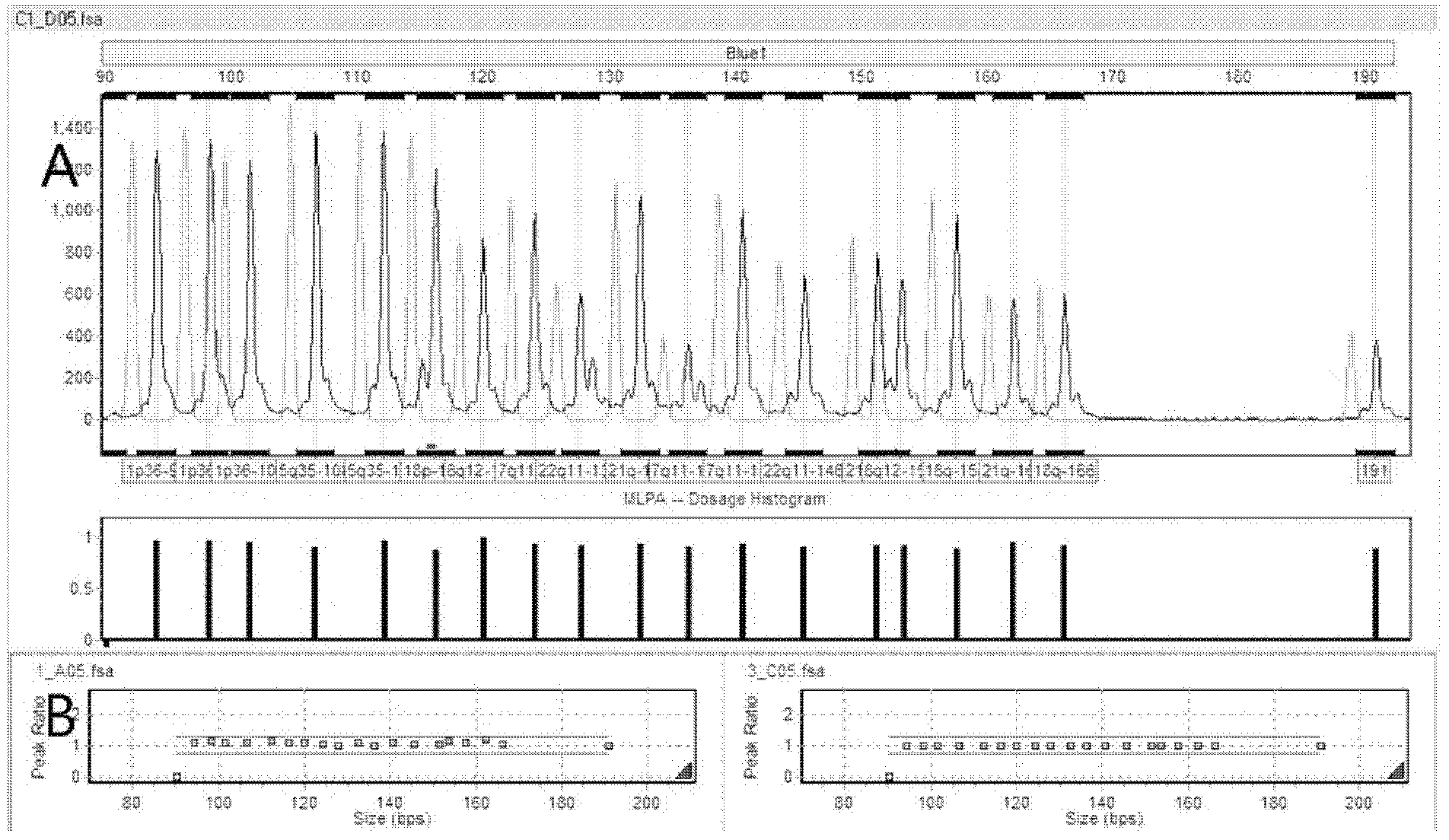Combination probe for screening multiple anomalysyndrome
A combined probe and syndrome technology, applied in the direction of recombinant DNA technology, DNA / RNA fragments, etc., can solve the problems of high cost, unsuitable multi-site screening and detection, and the diagnostic rate is less than 5%
- Summary
- Abstract
- Description
- Claims
- Application Information
AI Technical Summary
Problems solved by technology
Method used
Image
Examples
Embodiment 1
[0059] Example 1. Design of probe sequences
[0060] (1) Selection of multiple malformation syndrome and its key genes
[0061] refer to http: / / www.ncbi.nlm.nih.gov / sites / GeneTests / Review? db=GeneTests In the description of common multiple malformation syndromes, the syndromes with relatively high incidence and the main etiology of partial duplication / deletion of chromosomes were selected. And according to the description and published related literature reports, select key genes or key regions. If the key gene or key region has not been identified, select one at each end of the duplication / deletion fragment and three genes in the middle to represent the segment.
[0062] (2) Design the probe sequence
[0063] The selected target gene sequence is in http: / / genome.ucsc.edu / cgi-bin / hgBlat Obtain and distinguishably mark coding regions, SNPs and repeat sequences.
[0064] For each target gene, the probe consists of a left-half sequence and a right-half sequence. The 3' en...
Embodiment 2
[0069] Example 2 Identification of probes
[0070] (1) Negative case control
[0071] Select the normal population, extract the whole genome DNA, conduct MLPA experiment, and use Genemarker Demo1.97 version software for data analysis. See image 3 .
[0072] (2) As a positive case control, select 1 case of Sotos syndrome, 1 case of trisomy 18, 1 case of 22q11 deletion / duplication syndrome, 1 case of trisomy 21, 1 case of trisomy 13, and 1 case of Cri du Chat syndrome and 1 case of Prader Willi were tested and verified by Affymetrix 2.7M chip, and patients with corresponding syndromes were clearly diagnosed as positive controls. After the whole genome DNA was extracted, MLPA experiments were performed, and Genemarker Demo version 1.97 software was used for data analysis. See Figure 4 .
Embodiment 3
[0073] Example 3 Detection of Multiple Malformation Cases
[0074] A total of 59 children with multiple malformations hospitalized in the neonatal ward of the Children's Hospital Affiliated to Fudan University were selected. After the whole genome DNA was extracted, the MLPA experiment was performed, and Genemarker Demo version 1.97 software was used for data analysis. A total of 13 positive cases were found, with a discovery rate of 22.03%. There were 7 cases of trisomy 21, 2 cases of 5p15 deletion, 1 case of 22q11 duplication, 1 case of deletion, 1 case of 5q35 deletion, and 1 case of 15q11-q13 deletion.
PUM
| Property | Measurement | Unit |
|---|---|---|
| melting point | aaaaa | aaaaa |
Abstract
Description
Claims
Application Information
 Login to View More
Login to View More - R&D
- Intellectual Property
- Life Sciences
- Materials
- Tech Scout
- Unparalleled Data Quality
- Higher Quality Content
- 60% Fewer Hallucinations
Browse by: Latest US Patents, China's latest patents, Technical Efficacy Thesaurus, Application Domain, Technology Topic, Popular Technical Reports.
© 2025 PatSnap. All rights reserved.Legal|Privacy policy|Modern Slavery Act Transparency Statement|Sitemap|About US| Contact US: help@patsnap.com



